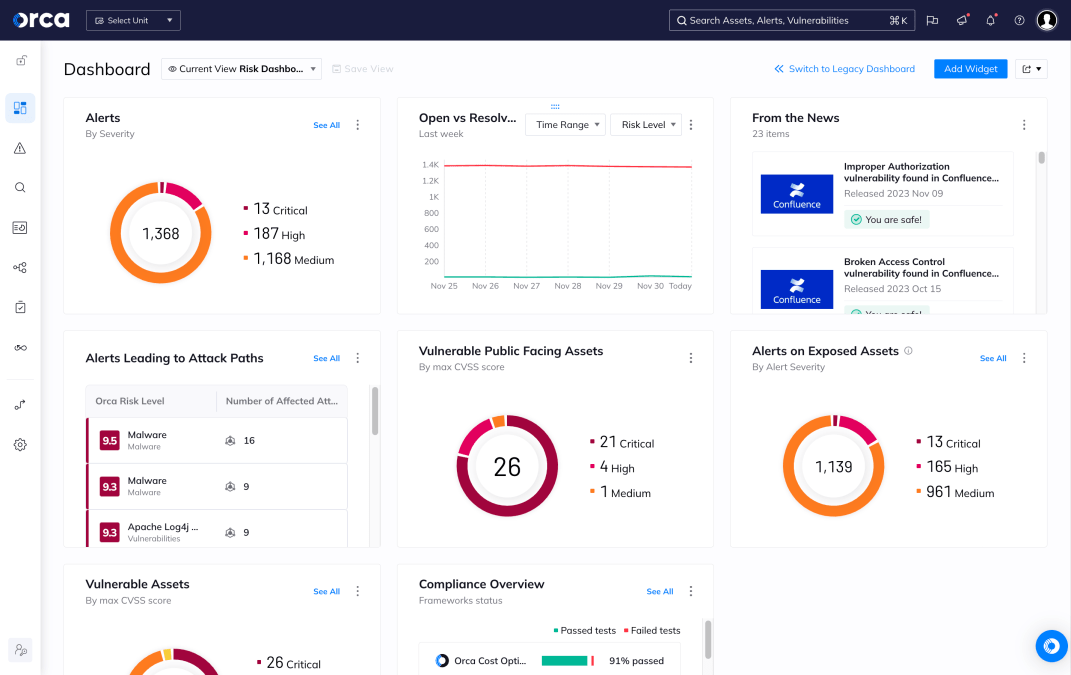An Integrated Development Environment (IDE) is a software application that consolidates the tools developers need to write, test, debug, and deploy code within a single interface. Modern IDEs include code editors, compilers, debuggers, version control integrations, and more, enabling developers to streamline workflows and reduce context-switching. In cloud security contexts, IDEs are particularly important because vulnerabilities introduced during development can propagate to production if not caught early. As such, IDEs are foundational to secure software development and DevSecOps practices.
Why is it important?
IDEs play a crucial role in reducing development errors and accelerating the software development lifecycle. From a security perspective, they also:
- Enable early detection of vulnerabilities before code reaches production
- Support shift-left security by embedding security checks in development workflows
- Help prevent misconfigurations in Infrastructure as Code (IaC)
- Offer seamless integration with security plugins and scanners
The cost of fixing a vulnerability during development is significantly lower than fixing it post-deployment. With cloud-native applications and infrastructure being defined through code, IDE security practices influence the security of the entire environment.
How does it work?
IDEs operate by combining several critical functions into a unified platform:
- Code editing: Syntax-aware editors provide features like code completion, linting, and formatting.
- Build and run: Compilers or interpreters help convert code into executable artifacts.
- Debugging: Integrated debugging tools allow step-through execution, breakpoint setting, and variable inspection.
- Version control: Integration with systems like Git allows commit, push, pull, and merge operations directly from the IDE.
From a security standpoint, IDEs integrate with tools and plugins such as:
- Static Application Security Testing (SAST): Detects vulnerabilities in real-time as code is written.
- Software Composition Analysis (SCA): Identifies known vulnerabilities in third-party packages.
- Secrets detection: Flags hardcoded credentials or API keys before they are pushed to repositories.
- IaC security scanning: Analyzes Terraform, Kubernetes, and other configuration files for risky settings.
Advanced IDEs like Visual Studio Code, JetBrains IntelliJ, and Eclipse support these capabilities through marketplaces and extensions, making it easier to enforce security without disrupting developer productivity.
Security risks and challenges
IDEs introduce several risks that can compromise application security and cloud security:
- Plugin vulnerabilities: Third-party extensions may be insecure or malicious, opening supply chain risk.
- Insecure storage: Saved credentials, environment variables, or config files in plaintext can be exfiltrated.
- Remote development risks: Web-based or cloud-hosted IDEs (e.g., GitHub Codespaces) may be susceptible to session hijacking or unauthorized access.
- Shadow code and misconfiguration: Developers may unknowingly introduce insecure practices or misconfigured resources.
- Over-reliance on automation: Developers may trust automated scans too much, overlooking complex vulnerabilities.
According to CISA and NIST guidance, insecure development environments contribute significantly to software supply chain risk. With IDEs often serving as the first point of entry for attackers in development pipelines, organizations must treat them as part of their critical infrastructure.
Best practices and mitigation strategies
To minimize IDE-related security risks, organizations should adopt the following practices:
- Lock down IDE configurations: Define baseline configurations and enforce plugin policies.
- Use trusted extensions only: Vet third-party tools before installation.
- Implement secrets management: Avoid hardcoding sensitive data and use environment variables or secret managers.
- Integrate SAST and SCA tools: Automate vulnerability detection in real-time.
- Scan IaC files: Ensure security controls are applied to templates before deployment.
- Secure network connections: Require VPNs, encrypted traffic, and multi-factor authentication (MFA) for remote access.
- Educate developers: Offer training on secure coding, common vulnerabilities, and proper IDE hygiene.
- Regular audits: Periodically review IDE usage, configurations, and logs to ensure policy adherence.
Embedding security within the IDE as part of a broader secure software development lifecycle (SSDLC) helps prevent vulnerabilities from reaching production and aligns with “secure by design” principles.
How Orca Security helps
The Orca Cloud Security Platform enhances application security by:
- Detecting misconfigurations, vulnerabilities, and secrets in git repositories and other code artifacts
- Tracing production risks to their code origins and enabling teams to remediate risks directly at their source
- Integrating with IDEs, source code managers, and CI/CD pipelines, infusing security seamlessly into developer workflows
- Delivering AI-Driven Remediation for Code, transforming cloud alerts into AI-driven fixes and one-click pull requests (PRs) directly from the Orca Platform
By aligning security insights with development activity, Orca unifies security across the application lifecycle, helping organizations to improve security and development outcomes.



